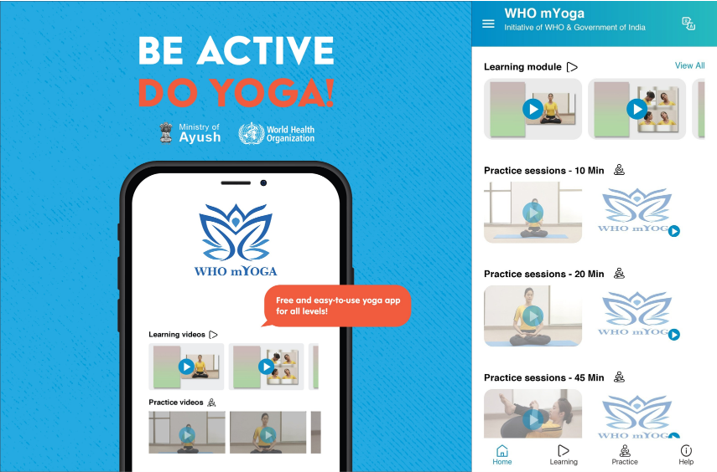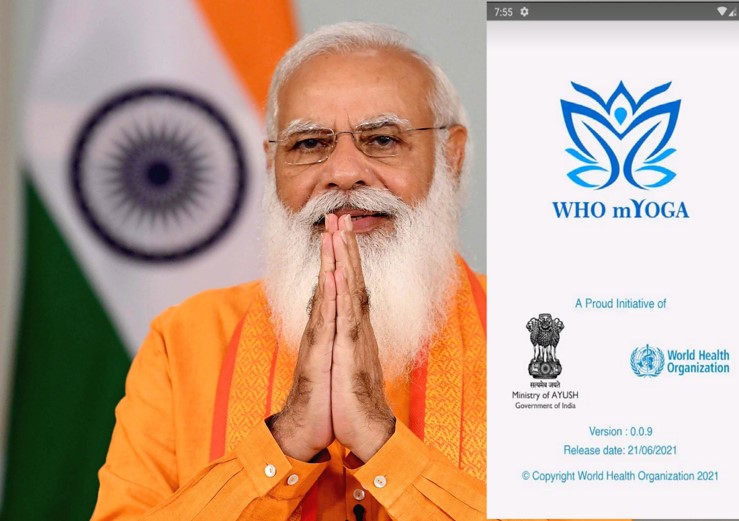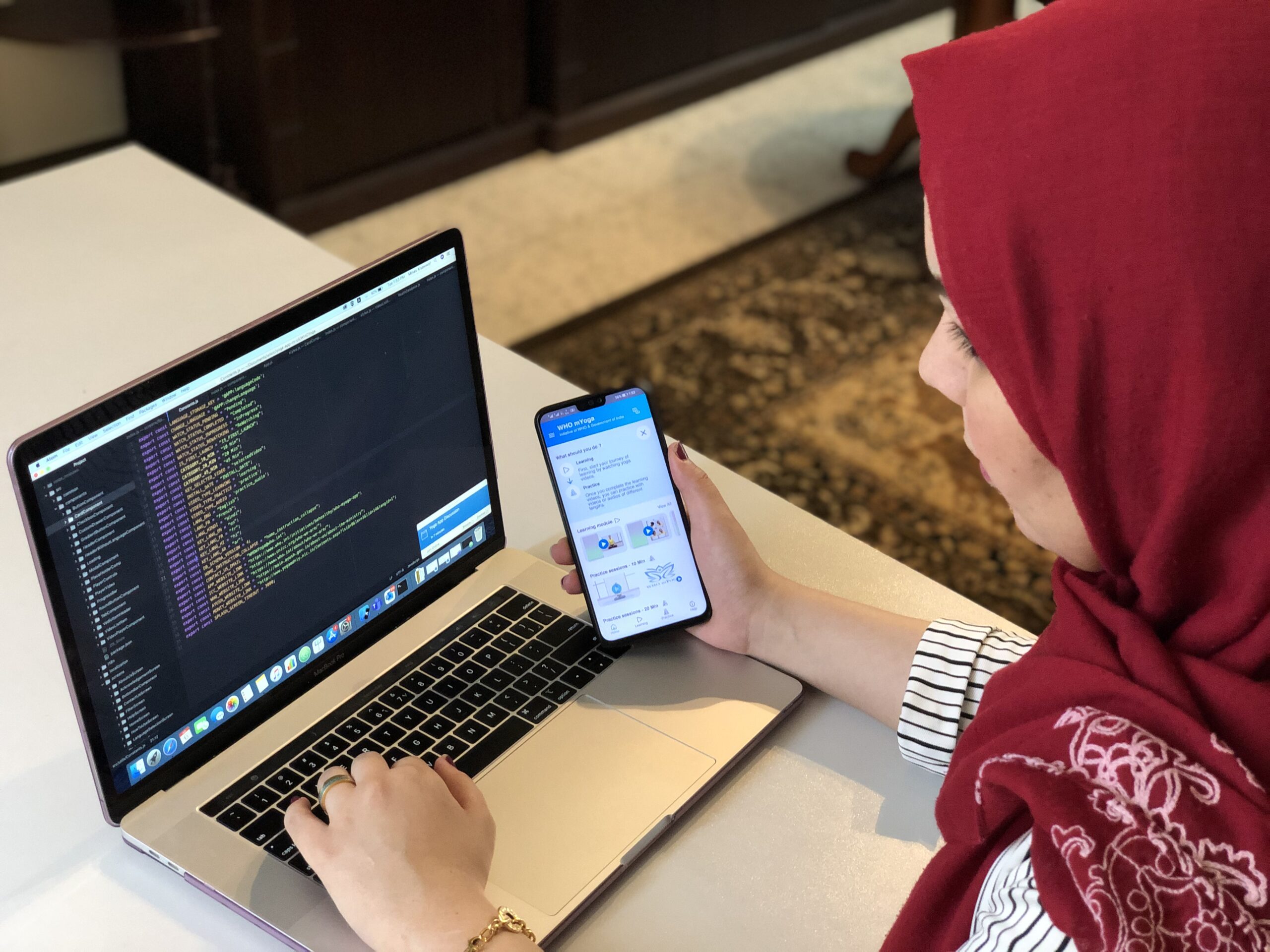The World Health Organization, together with the Ministry of AYUSH, Government of India, recently launched the well-received and popular WHO mYoga app.
Developed by UNICC, the mYoga app has found a global audience with a simple yoga practice platform for the general public. It includes Yoga learning and practice sessions of varying durations. The app comprises a collection of videos and audio sessions that users can enjoy in the comfort of their homes, and when they wish. It also allows users to download videos in case they wish to watch them offline at their own convenience.
Need an efficient and inexpensive yoga app in a timely fashion? Call on UNICC. Its Application Delivery team helps Clients design, enhance and build mission-critical custom enterprise applications and collaborative solutions.
UNICC has been developing and supporting applications for several years, with solutions and products delivered to its Clients and Partner Organizations, including intranet, extranet and corporate website redesign, custom business application development, application integration, data migration, certificate exchange hubs, mobile apps and more.
The mYoga app is safe and secure, collecting no data from users at all, and can be used as a daily Yoga companion for people aged around 18-65 years. The app is easy-to-use and a free tool for people who are trying yoga for the first time or those who already practice yoga regularly. No special equipment is needed, and users can learn or practice yoga from 3 to 45 minutes, so even busy people can use it to get active, achieve peace of mind and stay fit.
The app was built using React Native, which is an Open Source cross-platform framework for mobile development. UNICC leverages Amazon AWS for storing the media content (video/audio files). The WHO mYoga app is available for free download on Android devices and Apple devices.
The application currently supports two languages, namely English (default) and Hindi. I will make it available in all six UN languages.

Credit: WHO
The Prime Minister of India expressed his hope that this app will provide help for spreading the practice of Yoga worldwide and will also contribute to the efforts of “One World, One Health.”
The project started in 2019 and the first version of the WHO mYoga App was recently launched by Prime Minister Narendra Modi while he was addressing 7th International Yoga Day on Monday, June 21, 2021. UNICC is currently working on the second version where all six UN languages will be available with some improvements.
The mYoga app is an effort to further popularise Yoga. It will also help realise our collective vision of “One World, One Health“.
Narendra Modi, Prime Minister of India
He also said that this app will be helpful in keeping people healthy during the pandemic. It may have a great role in the re-rehabilitation of the health of the people who have recovered from COVID-19.

Photo: Prime Minister of India Narendra Modi with WHO mYoga App (see story here).
In addition, the WHO Director General Tedros Adhanom Ghebreyesus shared a Twitter post in June about the App, saying: “Happy #InternationalDayOfYoga! @WHO is very happy to launch a new mYoga App, together with the Government of #India, to help you do yoga at your convenience, especially during #COVID19. Thank you so much, for your support, Prime Minister @narendramodi! Let’s #BeActive!”
Happy #InternationalDayOfYoga! @WHO is very happy to launch a new mYoga App, together with the Government of #India, to help you do yoga at your convenience, especially during #COVID19.
— Tedros Adhanom Ghebreyesus (@DrTedros) June 21, 2021
Thank you so much, for your support, Prime Minister @narendramodi! Let’s #BeActive! https://t.co/PFMuNfDSwJ pic.twitter.com/McR2BZq8Q6
The app, recently launched, has already secured a prestigious place in the AppBrain world ranking!
We faced many challenges during the mYoga app development process, but after launching the app and seeing the positive feedback from the users and the prestigious place the app secured quickly in the World Ranking, we felt really thrilled. I believe that self-belief, teamwork and hard work will always earn you success.
Minas al Sawwaf, React Native Developer, UNICC
mYoga features
- Viewing and downloading of learning and practice videos
- Users can view learning and practice videos for the various Yoga training exercises to understand how to perform the exercise. The video once viewed entirely will be marked as “Completed”. In case the user has not finished watching the entire video, it will be marked as “In progress”. User can also download the video if needed for offline viewing. A particular practice video will be enabled only once the relevant learning videos for that practice video have been “Completed”
- Playing and downloading of audio files
- Users can listen to the audio clips for a particular practice video for the various Yoga training exercises to understand how to perform the exercise. User can also download the audio if needed for offline listening.
- Internationalisation: users have the option to switch the language from within the application. The application currently supports two languages namely English (default) and Hindi
- Audio/Video streaming: users can view the training videos and listen to audio clips using the media player within the app. The application streams the video/audio from Amazon cloud. The media thus streamed is rendered on the device using Amazon Media Convert and Cloud front services. In addition, all the media files are stored centrally inside an Amazon S3 bucket.
WHO mYoga app and the SDGs
The app proposed the concept of Be Healthy, Be Mobile (BHBM) under the United Nations SDG for achieving Universal Health Coverage by the year 2030. BHBM initiative was set up by the World Health Organization (WHO) and the International Telecommunication Union (ITU) in 2012 to support the scaling up of mobile health technology in the National Health Service (NHS) to combat various non-communicable diseases.
The goal of developing the WHO mYoga app is to spotlight the health benefits of yoga that can ease the stress of our modern ‘laptop’ lives. SDG 3 “Ensure healthy lives and promote well-being for all at all ages” is particularly relevant since yoga improves physical health and general well-being. Other SDGs can also be seen in different aspects. Indian Prime Minister Narendra Modi highlights not only the health benefits of the practice but also the sustainable lifestyle it promotes, leading to better harmony between people and the planet.

